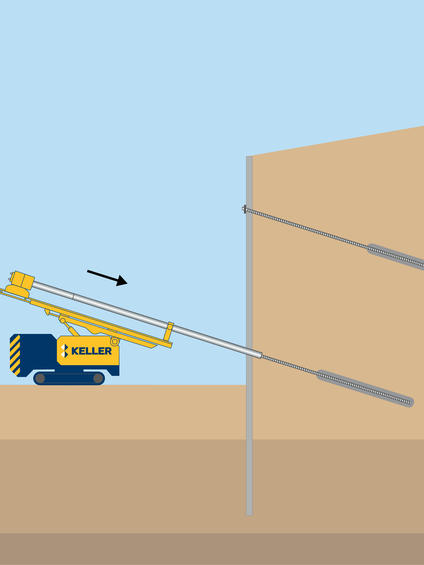Anchors transfer loads using grouted thread bars or strand tendons connected to a structure and bonding into stable soil or rock.

Common uses
Process
Anchors consist of full-length holes drilled vertically for uplift support or at angles for lateral support into the bond zone in soil or rock, using casing if necessary. Thread bar or strand tendon is inserted into the hole, and the hole is filled with high-strength grout. Any casing used is then extracted. Bond breaker covers the length of bar or strand above the bond zone to eliminate load transfer there. Then, the anchor head is generally tensioned and connected to the structure requiring support.
Ground anchors are also frequently utilized for lateral support of slurry diaphragm walls. Since the ground anchors provide intermediate support points at one or more levels, they reduce bending moments and reduce the need for thicker walls, reinforcement, and depth-of-toe requirements. Anchors eliminate the need for internal steel bracing and strutting within the excavation and leave it free of obstructions, reducing excavation costs and speeding up construction. This aspect can be particularly valuable in congested urban locations with limited surrounding space for equipment and materials. Anchors are used in soils or rock and may be permanent or temporary.
Advantages
Quality assurance
Keller has been installing anchors for many years, continually evolving the technique to achieve better performance. We perform testing and monitoring to ensure high-quality execution.